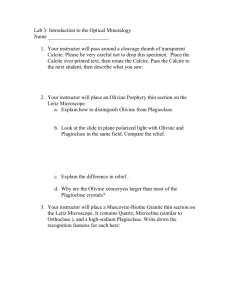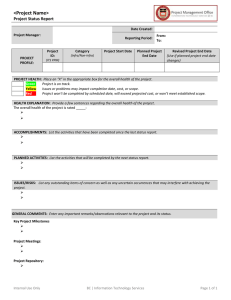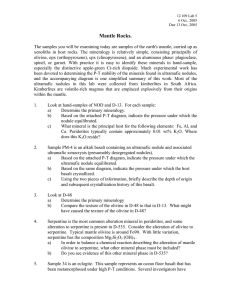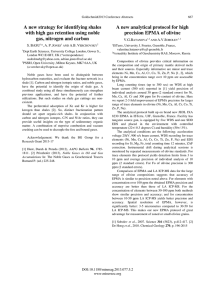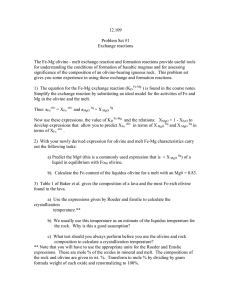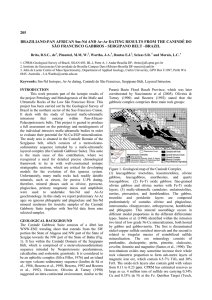Seminar 5 (to follow Lecture 10)
advertisement
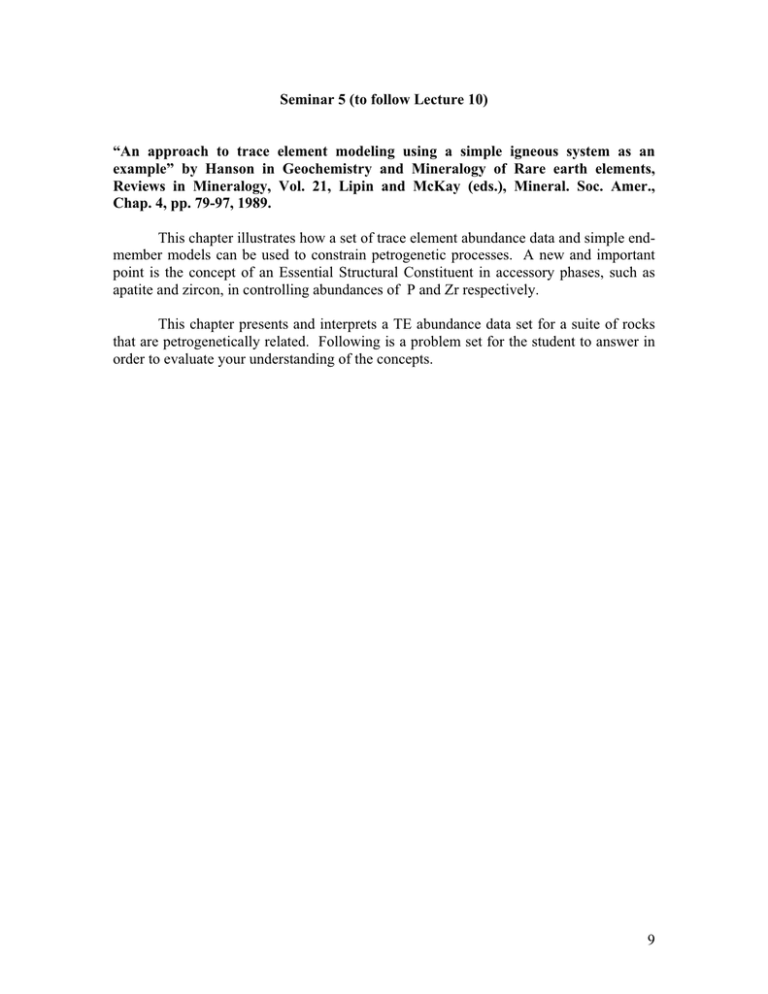
Seminar 5 (to follow Lecture 10) “An approach to trace element modeling using a simple igneous system as an example” by Hanson in Geochemistry and Mineralogy of Rare earth elements, Reviews in Mineralogy, Vol. 21, Lipin and McKay (eds.), Mineral. Soc. Amer., Chap. 4, pp. 79-97, 1989. This chapter illustrates how a set of trace element abundance data and simple endmember models can be used to constrain petrogenetic processes. A new and important point is the concept of an Essential Structural Constituent in accessory phases, such as apatite and zircon, in controlling abundances of P and Zr respectively. This chapter presents and interprets a TE abundance data set for a suite of rocks that are petrogenetically related. Following is a problem set for the student to answer in order to evaluate your understanding of the concepts. 9 Problem Set 1. Read Chapter 4 “An approach to trace element modeling using a simple igneous system as an example”: in Reviews in Mineralogy, vol. 21, Mineral. Soc. America, 1989, pp. 79-97. 2. If the mantle source for the ocean island lavas discussed in Table 1 below had 60% olivine with Fo89 and a bulk rock Ni content of 1500 ppm. (a) calculate Mg/(Mg+Fe) [molar] of the equilibrium melt using KD = (Fe/Mg)ol/(Fe/Mg)melt = 0.3 and assuming olivine in residue is Fo90. (b) the Ni content of melts formed when F = 0.1 and 0.2. (c) compare these with data in the following Table 1. 3. Hanson presented the following problem for attendees at a “Short course”. After reading the Chapter 4, use the following data set and graphs to constrain the petrogenetic processes. 10 Problem for REE Short Course, U.S.G.S. Denver, January 18, 1991 Gilbert N. Hanson A sequence of fine-grained basalts in the middle of a large ocean island gives the following trace element compositions. The samples have less than 0.1% phenocrysts of olivine or plagioclase. An olivine phenocryst with Fo84 from sample 5 has 1,280 ppm Ni. A plagioclase crystal in sample 5 has 1995 ppm Sr. The analytical uncertainty for all trace elements is ±1%. Determine the petrogenetic history for this sequence of samples, i.e. evaluate the parents and processes. Limit the processes considered to melting and fractional crystallization. Use the data in Table 1 and the graphs in Figures 1 to 6 to evaluate the processes and make appropriate calculations to show the extents of the processes. Table 1 Data for samples 1 – 5 Sample Phenocryst mineralogy 1 2 3 4 5 ol ol ol ol ol + plag La cn Ce cn Nd cn Sm cn Eu cn Gd cn Dy cn Er cn Yb cn Sr ppm Rb ppm P2O5% Ni ppm Mg#(1) 265 201 109 62.2 49.4 37.5 22.1 12.5 8.96 1.600 60 1.60 261 0.70 169 130 73 42.6 34.9 28.3 18.4 11.4 8.42 1000 37.5 1.00 269 0.71 114 88 50.4 30 25.1 21.3 15.1 10.1 7.81 667 25 0.667 279 0.72 143 110.5 62.7 37.1 30.7 25.5 17.5 11.3 8.54 842 31.6 0.842 156 0.66 150 116 65.9 39.0 31.8 26.8 18.4 11.9 9.01 855 33.3 0.886 107 0.61 (1) Mg# is Mg/(Mg+Fetotal) in cation mole percent. (2) Cn = chondritic-normalized (3) Ol = olivine (4) Plag = plagioclase 11 12 13 14 MIT OpenCourseWare http://ocw.mit.edu 12.479 Trace-Element Geochemistry Spring 2013 For information about citing these materials or our Terms of Use, visit: http://ocw.mit.edu/terms.


